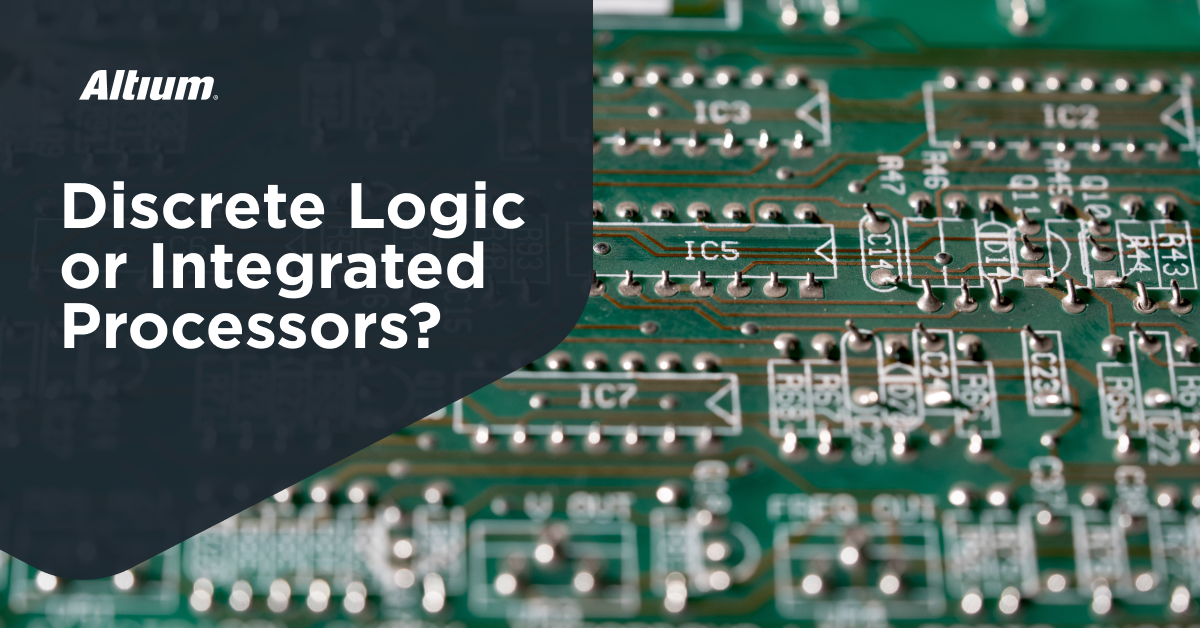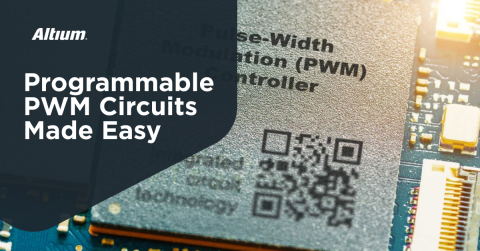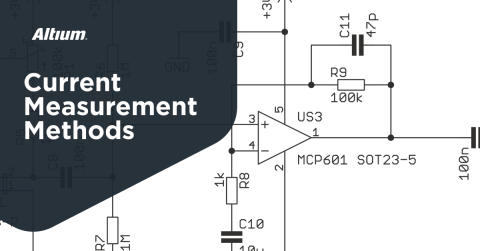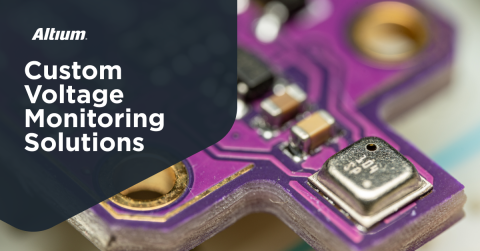Why Discrete Logic Might Be Costing You Time and Board Space

When you look at the list of mixed-signal ASICs available, the list is quite staggering, but the range of programmability of these devices is basically zero. This is where discrete logic and discrete analog circuits make their way into designs, and they quickly increase the component count required to implement basic functions. Unfortunately, these circuits also have essentially zero programmability unless you implement DACs and add application logic to your firmware.
So how can designers get around adding discrete logic to their systems and still keep board size small? The answers have always been there for purely digital applications, requiring a CPLD or FPGA. But a different approach is needed for mixed-signal systems, where the same type of programmability can be brought into the analog portion of the system design. This article offers some ways to create programmable digital and mixed-signal logic without relying on discrete logic components.
Why Discrete Logic?
Decades ago, discrete logic was the only option outside of microprocessors for implementing any kind of logic in a digital system without writing an embedded application or running software. Although discrete logic is still the first stop for digital electronics students in university courses, discrete logic is still widely used in commercial designs, consisting of all the basic digital logic elements:
- Flip-flops
- Clocks, timers, and counters
- Standard logic gates
- Arithmetic logic circuits
- Shift registers
When building digital circuits from discrete logic, typically logic gates see the most use, followed by flip-flops. Each of these elements requires its own integrated circuit, sometimes in a dual or quad pack format. Decades ago, this was appropriate for simple digital systems, but it is totally unscalable for modern electronics, even those performing basic processing tasks that would require only a few lines of logic in code.
FPGAs = Higher Logic Density
FPGAs have become the primary solution for designers who need to implement complex digital logic without the overhead of discrete components. These parts offer millions of programmable logic cells on a single chip such that FPGAs can replace entire boards full of discrete logic gates, flip-flops, and other basic elements. Modern FPGAs can implement sophisticated state machines, parallel processing paths, and custom data processing pipelines that would be impractical or impossible to achieve with discrete logic.
Unfortunately, for most FPGAs, they don’t always produce a reduction in required board space due to a few important factors:
- Most FPGAs are large components with high pin counts
- Many FPGA applications require an external memory (eMMC, RAM, etc.)
- FPGAs require multiple voltage regulators with low noise and high power output
- FPGAs are mostly used for the high pin count, leaving much of the internal logic unused
When taken together, the FPGA and the additional memory/power components can actually require more board space than an MCU, some ASICs, and discrete logic. While also FPGAs require more power than discrete logic and have a steeper learning curve with specialized HDL programming languages like VHDL or Verilog. This gives FPGAs a special place as a prototyping platform or a fully custom digital processor rather than a suitable replacement for most discrete logic circuits.
CPLDs = Lower Power, Simpler Development
CPLDs occupy a sweet spot between simple discrete logic and full-featured FPGAs, making them ideal for applications that don't require huge gate/logic cell counts but still benefit from programmability. CPLDs typically offer lower power consumption than FPGAs because they use a simpler architecture based on macrocells. A CPLD can easily replace a large number of discrete logic ICs while consuming less power than the equivalent discrete implementation.
The development process for CPLDs is generally more straightforward than for FPGAs, with faster compilation times and more predictable timing behavior due to their deterministic architecture. For designers who are new to programmable logic, CPLDs are simpler to develop, especially for common tasks like glue logic, state machines, bus interfaces, and I/O expansion. While CPLDs have lower logic capacity compared to FPGAs, they provide instant-on capability and deterministic operation, making them the preferred choice for control applications, simple signal processing, and interface bridging where reliability is more important than computational power.
Mixed Signal Processors Integrate Discrete Analog Components
One of the biggest problems with discrete logic and integrated processors for custom logic is that they have no ability to handle analog signals. These components must have an integrated ADC or they must interface with an external ADC. The other option is to implement everything in a microcontroller that contains ADC pins, but this does not provide fast latency that is typically desired of discrete logic or custom logic.
This is where mixed signal processors come into play. These processors can provide custom logic which totally eliminates the need for discrete logic components in many applications. They also include analog interfaces in the form of comparators and an ADC, as well as programmable voltage references for these components. This allows the designer to assign logic states to an analog signal based on thresholding.
GreenPAK provides the fastest path for developing a mixed-signal processor thanks to the graphical development tools in the Go Configure software application. These devices also come in very small footprints and will typically eliminate a dozen or more other components which would be used to design an analog front end.
The mixed-signal processor components and developer tools in Renesas GreenPAK give designers the ability to develop fully custom digital, analog, or mixed signal ICs. These programmable mixed-signal processors allow consolidation of functions found in clock and signal management circuitry, allowing for smaller, more efficient systems. To learn more, take a look at the GreenPAK components and reference examples.
Whether you need to build reliable power electronics or advanced digital systems, use the complete set of PCB design features and world-class CAD tools offered by Altium to implement your GreenPAK solutions. Altium provides the world’s premier electronic product development platform, complete with the industry’s best PCB design tools and cross-disciplinary collaboration features for advanced design teams. Contact an expert at Altium today!










